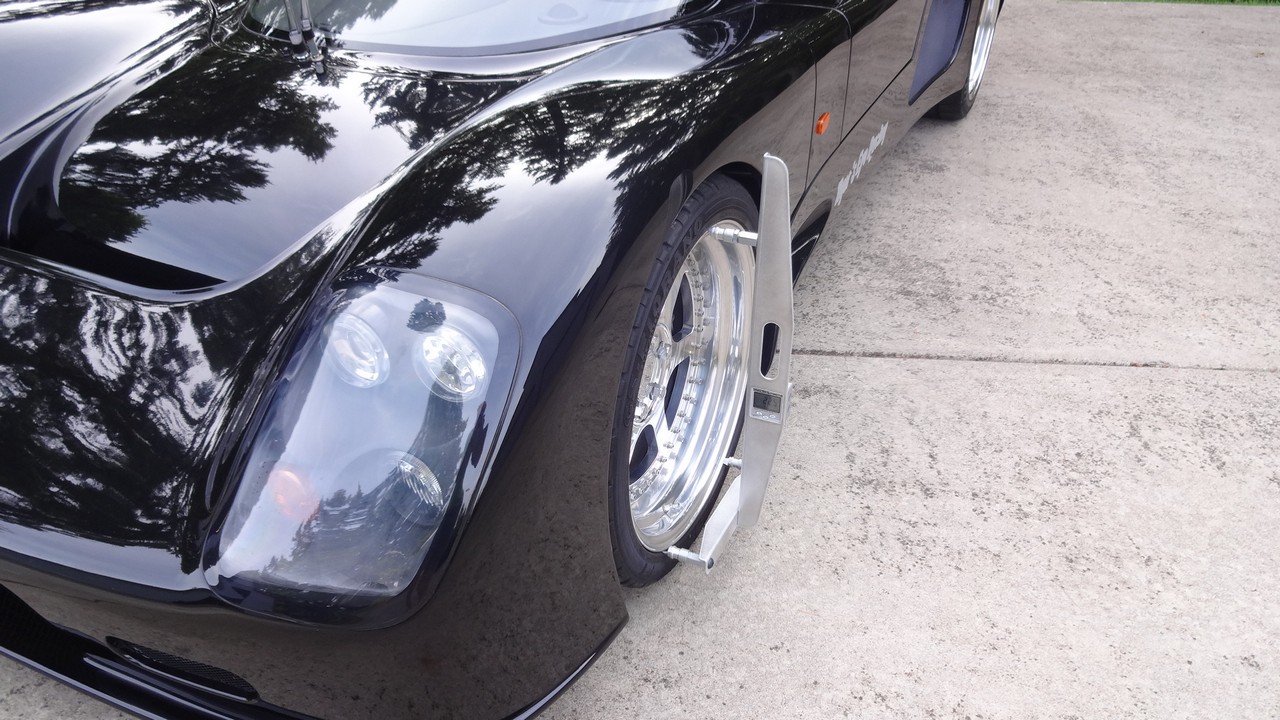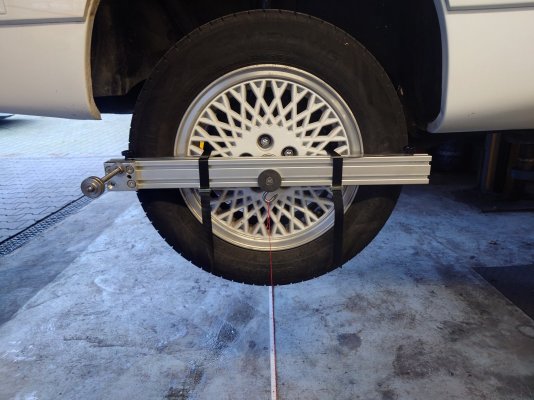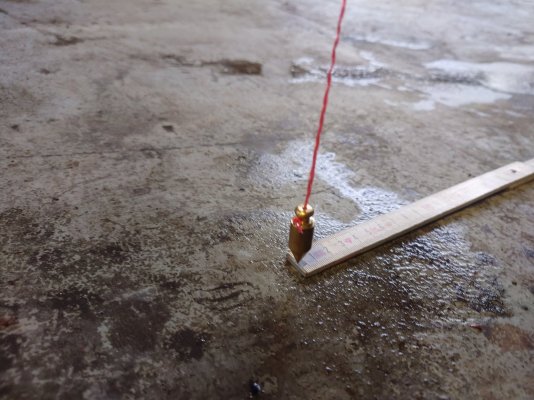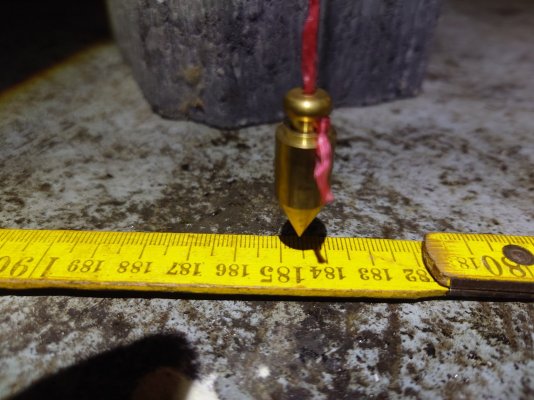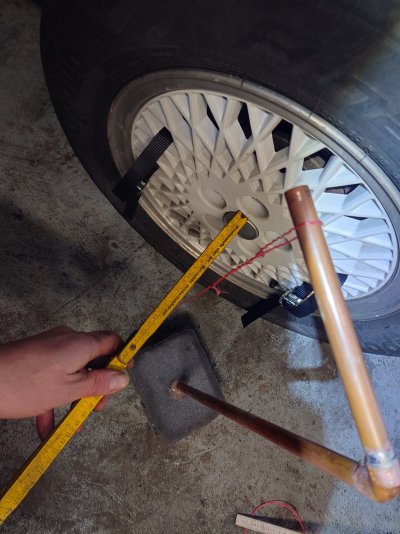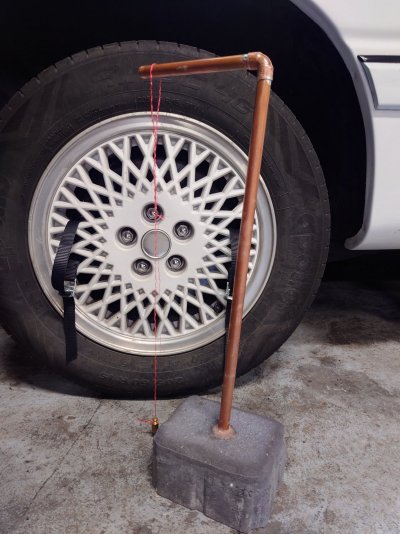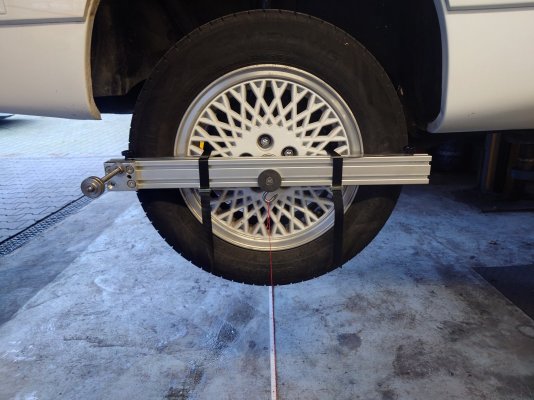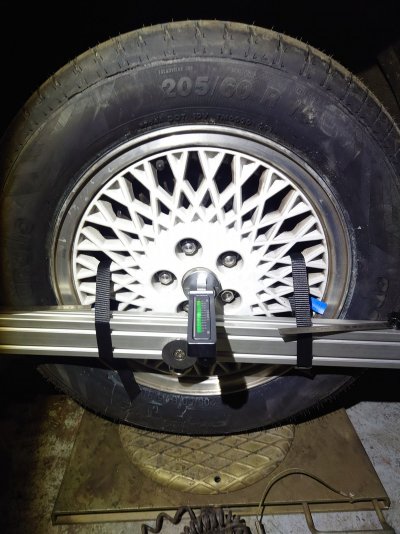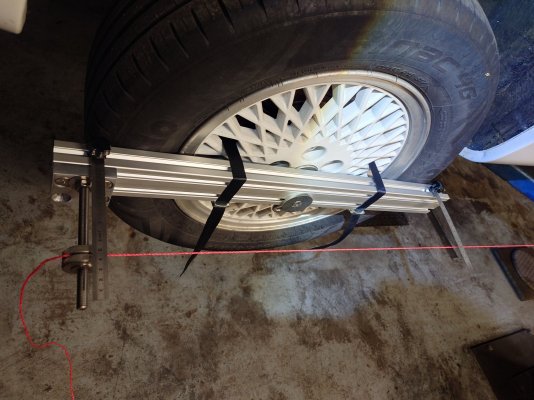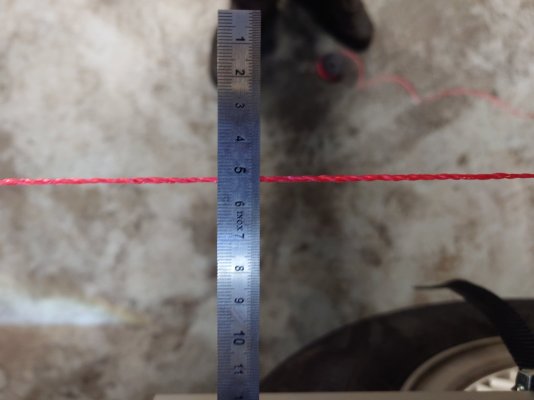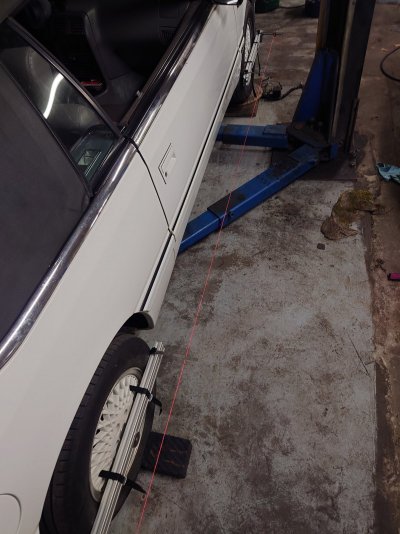Building a new shop so no pics, everything packed in car hauler.
Maybe I wasn't clear in my description of 3/4x 1 1/2x 24 ft. Set these on 6x6 or 8x8 blocks F/R(4) as a thrust angle measurement from rear axle. Toe in is a tape across in front of tires to rect tube.
Different trucks have F/R axle width differences so I stack 3 foot lengths of rect tube or sq tube on the blocks to match. The front 3 footers are for toe mainly.
I like it because I can measure from the outer "Box" easily and accurately to 1/16. Two more 3/4x 1 1/2x 8 feet make the full box when needed. I can set it up in 10 minutes. The caster/camber is a 30-45 min test that I do at least twice to verify repeat angles L/R. I found that doing the math for adjustments was easier than retesting over and over.... so once I knew where I was going, the angle finder delivered the result with a final 2 tests to verify. Remember that wheels are turned x degrees R then 0 then L then 0.
A couple strong magnets and Plumb Bobs and nearly all frame/body dimensions can be checked in an hour or two.
One truck I have was 3/16 to 1/4 shorter on drivers side until it got offset CA bushings.
Hope this helps You.
Maybe I wasn't clear in my description of 3/4x 1 1/2x 24 ft. Set these on 6x6 or 8x8 blocks F/R(4) as a thrust angle measurement from rear axle. Toe in is a tape across in front of tires to rect tube.
Different trucks have F/R axle width differences so I stack 3 foot lengths of rect tube or sq tube on the blocks to match. The front 3 footers are for toe mainly.
I like it because I can measure from the outer "Box" easily and accurately to 1/16. Two more 3/4x 1 1/2x 8 feet make the full box when needed. I can set it up in 10 minutes. The caster/camber is a 30-45 min test that I do at least twice to verify repeat angles L/R. I found that doing the math for adjustments was easier than retesting over and over.... so once I knew where I was going, the angle finder delivered the result with a final 2 tests to verify. Remember that wheels are turned x degrees R then 0 then L then 0.
A couple strong magnets and Plumb Bobs and nearly all frame/body dimensions can be checked in an hour or two.
One truck I have was 3/16 to 1/4 shorter on drivers side until it got offset CA bushings.
Hope this helps You.

